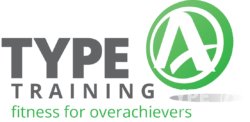Looking for an intense workout method that can really boost your muscle growth? German Volume Training (GVT) might be just what you need.
This challenging protocol uses a unique 10 sets of 10 reps structure. German national weight lifting coach Rolf Feser popularized it as an off-season training method for elite athletes.

German Volume Training delivers serious muscle-building results with high-volume work centered on compound movements. These workouts force your muscles to adapt and grow, and they help burn off extra body fat.
Popular posts:
The system piles a huge workload onto your muscles in a short time. Rest periods are short—just 60 seconds between sets.
When you do GVT right, your body gets pushed to its limits. This triggers muscle growth that traditional routines often miss.
Many serious lifters have experienced massive muscle gains with this European method, which took off in the 1950s through the 1970s.
Key Takeaways
- German Volume Training uses 10 sets of 10 reps with short rest to spark muscle growth and fat loss.
- Start with 60% of your one-rep max, and bump up the weight by about 2% weekly for best results.
- GVT focuses on compound moves and fewer exercises per session, making it intense but surprisingly efficient for gaining mass.
What Is German Volume Training (GVT)?

German Volume Training is a high-intensity, high-volume workout built to maximize muscle growth and strength. It’s known for being tough and surprisingly effective, especially among bodybuilders and strength athletes who like a real challenge.
Origins and History
GVT started in Germany in the 1970s. It was originally meant for Olympic weightlifters during their off-season.
Rolf Feser, the German national weightlifting coach, made the method popular. In the 1990s, strength coach Charles Poliquin brought it to North America, and it really caught on.
Before Poliquin, bodybuilders like Vince Gironda already used similar high-volume approaches, though they didn’t call it GVT. These early lifters figured out that lots of volume could spark major muscle growth.
The program was designed to help athletes pack on muscle before switching back to sport-specific training. Its reputation for results made it a staple in the bodybuilding world.
Fundamental Principles
The core of German Volume Training is 10 sets of 10 reps (the classic 10×10) for each main lift. You focus on compound moves that hit several muscle groups at once.
Key points:
- Rest periods: 60-90 seconds between sets
- Weight: About 60-70% of your one-rep max
- Exercise pairing: Often as antagonistic supersets
- Frequency: Work each muscle group every 4-5 days
The real challenge is keeping your form solid as you get more and more tired over those ten sets. Most GVT sessions happen 2-3 times a week, which gives you enough time to recover from those brutal workouts.
Core Philosophy of Volume Training
GVT is built on the idea that high volume at moderate intensity is the best recipe for muscle growth. Why does this work?
- Mechanical tension: All those reps put major stress on muscle fibers.
- Metabolic stress: Short rest means more metabolite buildup.
- Muscle damage: High volume causes micro-tears in muscle tissue.
Your body adapts to this stress by getting stronger and bigger. Advanced lifters sometimes switch to 6 reps per set instead of 10, since their nervous systems are more efficient.
This method pushes muscles to adapt by sheer workload, not just heavy weights. If you’re careful with your form, you might even lower your risk of injury compared to maxing out every set.
How German Volume Training Works
German Volume Training (GVT) relies on simple but effective principles. You get muscle growth through high volume and some specific techniques that make all the difference.
This method sets up the right conditions for hypertrophy with smart rep schemes, controlled tempo, and just the right load.
Classic 10 Sets of 10 Reps Method
At the heart of GVT is the 10×10 sets system—10 sets of 10 reps for a single exercise. That much volume creates metabolic stress and recruits tons of muscle fibers.
Pick compound moves like squats, bench press, rows, or deadlifts as your main lifts. Finish all 10 sets of your first exercise before moving on.
Rest for 60-90 seconds between sets. Those short breaks ramp up the metabolic challenge.
Stick to 1-2 exercises per body part. The volume is already sky-high, so no need to add a bunch of extra lifts.
Most GVT routines hit 2-3 muscle groups per session. Pairing antagonistic muscles (like chest/back, quads/hamstrings) keeps things efficient and helps with recovery.
Tempo and Time Under Tension
Time under tension is huge in GVT. The standard tempo is 4-0-2-0:
- 4 seconds lowering the weight (eccentric)
- No pause at the bottom
- 2 seconds lifting (concentric)
- No pause at the top
This slow tempo bumps up time under tension, which is key for muscle growth. It also stops you from using momentum and forces your muscles to do all the work.
For pulling moves like rows or pull-ups, you might flip the tempo (2-0-4-0) to focus on the lifting part. Sticking with this tempo is what separates true GVT from just doing a bunch of sets.
That slow lowering phase does more muscle damage, which leads to growth as you recover. Plus, controlled lifting lowers your injury risk in a high-volume program like this.
Training Volume and Intensity
GVT is all about volume, but not crazy intensity. You’ll use around 60-70% of your 1RM (one-rep max) for the 10×10 protocol.
This weight is tough, but you can stick with it across all sets. A lot of beginners go too heavy and can’t finish all the reps—don’t make that mistake.
Pick a weight you could do for about 20 reps if you were fresh. Trust me, it’s enough.
The training volume in GVT blows away most traditional programs. For example, if you bench 150 pounds for 10×10, that’s 15,000 pounds of total volume from one move.
Studies show this kind of high-volume training can lead to big muscle gains if you do it right. Only train each muscle group every 4-5 days, though—this stuff is intense.
Sets, Reps, and Load Selection
Picking the right weight is huge for GVT. Start with 60% of your 1RM for most lifts.
If you can hit all 10 sets of 10 reps with good form, bump the weight up 4-5% next time. The goal is to get all 100 reps, but don’t be shocked if you fade a bit on the last few sets.
Once you hit 10×10 clean, it’s time to increase the load. For secondary exercises, stick to 3 sets of 10-12 reps using a more standard approach.
These extra moves hit smaller muscles or patterns your main lifts might miss. Most GVT guides say to run this program for 4-6 weeks max, then switch things up. The volume is so high that staying on it too long just wears you out.
Key Benefits of GVT
German Volume Training delivers results with its high-volume approach. The workload is intense and can help you break through stubborn plateaus.
Muscle Hypertrophy and Growth
German Volume Training is fantastic for muscle hypertrophy, thanks to its 10×10 setup. All that volume creates metabolic stress and muscle damage—both crucial for growth.
By doing 10 sets of the same exercise, you fully exhaust your muscle fibers. Your body has to adapt by getting bigger, repairing the microtrauma from each session.
Compound lifts like squats and bench press work several muscle groups at once. This ramps up the anabolic environment way more than isolation moves ever could.
Your body responds to this overload by cranking up protein synthesis. With solid nutrition and enough recovery, you can see real muscle gains in just 4-6 weeks of sticking with GVT.
Strength and Mass Gains
GVT sets up a great environment for strength and mass development by using progressive overload. You start with moderate weights (about 60-70% of your 1RM), but the sheer volume adds up to serious strength endurance.
The program leans heavily on compound movements that hit several muscle groups at once:
- Squats
- Bench press
- Bent-over rows
- Military press
- Deadlifts
Your central nervous system gets used to the heavy workload. Over time, this boosts motor unit recruitment and coordination.
When you switch back to lower-volume training, you’ll probably notice you’re stronger than before. The weight might feel light at first, but by sets 7 through 10, it gets rough.
This kind of fatigue doesn’t just build muscle—it really tests your mental grit.
Endurance and Fat Loss
The high volume of GVT burns a lot of calories both during and after your workouts. Those intense training sessions keep your metabolism up for hours, thanks to the EPOC effect (Excess Post-exercise Oxygen Consumption).
Most GVT workouts last between 60 and 90 minutes, and your heart rate stays up the whole time. You’ll get a boost in cardiovascular conditioning and muscular endurance.
Completing 100 reps per exercise really drains your glycogen stores. If you stick with it, your body gets better at burning fat for fuel.
Within two or three weeks, you should notice your work capacity going up. Muscle endurance climbs fast as your body adapts to the workload.
If you want to tweak GVT for fat loss, you can try:
- Shorter rest periods (60-90 seconds)
- Adding cardio on days you’re not doing GVT
- Eating at a slight caloric deficit
German Volume Training Structure and Phases
German Volume Training follows a plan that aims for muscle growth and strength gains. The whole program usually runs 4-6 weeks and moves through phases that shift volume and intensity to keep you from stalling out.
Phase 1: Volume Emphasis
At first, you’ll stick with the classic 10 sets of 10 reps method. This high volume puts a lot of stress and tension on your muscles.
During this phase, your workouts should include:
- 1-2 main lifts per body part using the 10×10 scheme
- Weights at 60-70% of your one-rep max
- 60-90 seconds rest between sets
- A training split that gives each muscle group 2-3 days to recover
This phase lasts about 4 weeks. The idea is to finish all sets with the same weight, but the last few sets will probably feel brutal.
Keep an eye on your progress. Once you can finish all 10×10 sets with solid form, it’s time for Phase 2.
Phase 2: Intensity Increase
Once you’ve nailed the volume phase, your training block shifts toward heavier weights. Now you’ll do 10 sets of 6 reps with about 75-80% of your one-rep max.
Here’s what changes:
- Lower rep range (6 per set)
- Heavier weights (10-15% more than before)
- Rest periods get a bit longer (90-120 seconds)
- Even more focus on compound lifts
This phase helps your muscles get used to heavier loads and keeps the gains coming. Fewer reps mean you can focus on technique and push your nervous system a bit more.
Phase 2 usually lasts 2-3 weeks and bridges the gap between volume and pure strength work.
Advanced German Volume Training Variations
If you’re an experienced lifter, you can try a few GVT twists after you’ve finished the standard cycle:
Antagonist Pairing: Swap between opposing muscle groups (like chest and back, or biceps and triceps) with short breaks. This keeps the pace up and saves time.
The 10×5 Method: Do 10 sets of 5 reps with 85% of your max. This puts more emphasis on strength but still keeps the high-set structure.
Descending Volume: Start with 10 reps, then drop one rep each set (so 10, 9, 8, and so on) while adding weight. It’s a sneaky way to push intensity without getting totally wrecked.
Try these only after you’ve run through at least one full GVT cycle. Advanced lifters should use these tweaks if the classic GVT stops working.
Exercise Selection and Programming
Picking the right exercises for German Volume Training is key if you want to get the most muscle and strength gains. Your choices lay the groundwork for the tough 10×10 protocol that makes GVT what it is.
Primary Compound Movements
To get the most out of German Volume Training, stick with compound lifts that work several muscle groups at once. These moves are the heart of your GVT routine and give you the best results for your effort.
Best Compound Exercises for GVT:
- Barbell Bench Press
- Barbell Squats
- Deadlifts
- Bent-Over Rows
- Military Press
- Dips
- Pull-ups
Pick compounds you can do with good form, even when you’re tired. The 10 sets of 10 reps format is no joke, so technical skill matters. Start with about 60% of your 1RM—trust me, it’ll feel plenty heavy by the end.
Limit yourself to 1 or 2 compound moves per workout. More than that, and you’re just asking for trouble.
Accessory Exercises and Lifts
Compound lifts are the backbone of GVT, but some well-chosen accessory exercises help keep your physique balanced. Don’t use the 10×10 scheme here—your body will thank you.
Recommended Accessory Format:
- 3 sets of 10-20 reps
- Moderate weight
- Focus on isolation moves
Some good accessory picks: tricep extensions, bicep curls, lateral raises, and calf raises. These help out the smaller muscles that support your big lifts.
Don’t go overboard—limit accessories to 2 or 3 per session. The main lifts already pile on the fatigue. Accessories should support, not overwhelm.
Try to keep your total exercise count under five for each GVT workout (compounds plus accessories).
Supersetting and Workout Pairings
GVT often uses smart supersets to keep things moving and crank up the intensity. The classic move is to pair up antagonistic muscle groups—muscles that do opposite things.
Effective GVT Workout Pairings:
- Chest and Back (like bench press + rows)
- Quads and Hamstrings (like squats + leg curls)
- Arms and Shoulders (like overhead press + chin-ups)
To do these, hit one set of the first exercise, rest 90 seconds, then do a set of the second move. Take another 90 seconds, then repeat the process until you finish all 10 sets.
This keeps the intensity high but still gives you a bit of recovery between sets. Plus, it’s just a smarter use of your time than slogging through all 10 sets of one exercise before moving on.
Give each muscle group 4-5 days to recover before training it again—GVT is a lot to recover from.
Sample German Volume Training Workout Split
You can set up German Volume Training with different splits to help you build muscle and get enough recovery. Having a plan helps you handle the 10×10 sets across the week without burning out.
3-Day Split Example
A 3-day split is a solid choice for GVT because it gives you time to recover. Here’s one way to break it down:
Day 1: Chest and Back
- Bench Press: 10 sets x 10 reps
- Bent-over Rows: 10 sets x 10 reps
- Incline Dumbbell Flies: 3 sets x 10-12 reps
- Lat Pulldowns: 3 sets x 10-12 reps
Day 2: Legs and Abs
- Squats: 10 sets x 10 reps
- Leg Curls: 10 sets x 10 reps
- Calf Raises: 3 sets x 10-12 reps
- Hanging Leg Raises: 3 sets x 10-12 reps
Day 3: Arms and Shoulders
- Overhead Press: 10 sets x 10 reps
- Barbell Curls: 10 sets x 10 reps
- Tricep Extensions: 3 sets x 10-12 reps
- Lateral Raises: 3 sets x 10-12 reps
Rest for 90 seconds between sets on the 10×10 lifts. This routine usually runs for 4-6 weeks.
Muscle Group Pairings
GVT really shines when you pair up muscle groups that work well together in your training split. Some of the best combos include:
Antagonistic Pairings:
- Chest/Back (push/pull)
- Biceps/Triceps (opposing arm muscles)
- Quads/Hamstrings (front/back of legs)
Pairing muscles like this lets you train more often without burning out. Try to hit each muscle group about once every 4-5 days.
If you’re a beginner, start simple—just one 10×10 exercise per muscle group. Once you get used to it, add a second main movement, but keep extra exercises to just 3 sets so you don’t overdo it.
Stick with 60% of your 1-rep max for those 10×10 sets. That way, you can finish all the reps and still give your muscles a real challenge for growth.
Key Exercises for GVT
German Volume Training is all about big, compound moves that hit multiple muscles at once. Picking the right lifts makes the tough 10×10 sets really pay off.
Lower Body Movements
Start with the basics for your legs. The back squat is a must—it nails your quads, hamstrings, and glutes, plus your core gets in on the action. Use about 60% of your one-rep max so you can finish all ten sets.
Leg curls are great for hammering your hamstrings and balancing out all that quad work from squats. That helps keep injuries at bay.
The standing calf raise hits your calves hard with high reps. Stand with your feet on the edge of the platform and get a good stretch at the bottom.
Keep your form tight through every set. Rest between sets should be 60-90 seconds for best results.
Upper Body Movements
For chest, the bench press is your go-to. Mix it up with incline bench press or dumbbell bench press to hit your chest from different angles.
Barbell rows and T-bar rows build a thick back. Pull-ups and chin-ups widen your lats. For shoulders, the military press packs on mass and power. The 10×10 protocol really brings out the best in these lifts.
Close-grip bench press smokes your triceps but still works your chest and shoulders. It’s a better fit for GVT than most isolation moves.
Keep things controlled, especially when lowering the weight. Slowing down the eccentric part boosts time under tension and helps your muscles grow.
Accessory and Isolation Exercises
Even though GVT is all about big lifts, smart isolation work can round out your routine. Barbell curls and dumbbell curls hit your biceps after they’ve already worked during rows and pull-ups.
French press drills your triceps for extra size. Want more chest detail? Try incline flyes for your upper pecs. Rear delt flyes help balance your shoulders and improve posture.
If pull-ups are too tough for the full volume, swap in lat pulldowns. Use a pronated grip for a wide back, or supinated if you want more biceps action.
For these smaller moves, you might want to do 8×10 instead of 10×10 since little muscles fatigue quickly. It still gets the job done without frying you.
Rest Periods, Frequency, and Recovery
Rest, frequency, and recovery matter just as much as the workouts themselves. If you get these right, you’ll see more muscle and fewer problems with burnout or injury.
Rest Intervals and Timing
German Volume Training (GVT) sticks to strict rest periods to keep the intensity up. For your main 10×10 lifts, rest 90 seconds between sets. For accessory work, take it down to about 60 seconds.
Why so short?
- Your heart rate stays high the whole session
- Your muscles deal with more metabolic stress
- You get a bigger hormonal kick for muscle growth
Resting too little or too much really changes your results. Not enough rest, and you won’t finish your reps. Too much, and you lose the metabolic edge.
Use a timer or your phone to keep your breaks honest. It’s easy to lose track when you get tired.
Training Frequency Recommendations
GVT is tough, so nailing your training frequency is key. Usually, you only want to hit each muscle group once a week or every six days so you actually recover.
A sample week could go like this:
- Monday: Chest and Back
- Wednesday: Legs and Abs
- Friday: Shoulders and Arms
This lower frequency makes up for how much work each session packs in. Your muscles need that downtime to rebuild.
If you’re new to GVT, be extra careful not to overdo it. Start with fewer sets or a lighter version before ramping up. Your body will thank you later.
Optimizing Recovery
Muscle growth actually happens when you recover, not during the workout. Give yourself enough recovery time between sessions to avoid overtraining.
Some top recovery tips:
- Get 7-9 hours of good sleep every night
- Hydrate well before, during, and after you train
- Eat enough protein—aim for 1.6-2.2g per kg of bodyweight daily
- Do some light activity on off days to boost blood flow
- Pay attention to muscle soreness—it tells you if you’re ready to go again
Some advanced GVT routines even build in a 3-week recovery phase after tough blocks. You dial back the volume and let your body bounce back.
Honestly, listen to your body. If you’re wiped out or your lifts are dropping, take an extra rest day or plan a deload week with way less volume.
Progression Strategies and Overcoming Plateaus
Keeping your gains coming with German Volume Training takes some planning and a bit of creativity. When the usual 10×10 stops working, it’s time to tweak your approach.
Adjusting Load and Volume
Kick off your GVT cycle with about 60% of your one-rep max. That should let you finish all ten sets of ten without your form falling apart.
Once you can nail all 10×10 sets cleanly, bump the weight up by 4-5% next time. No need to rush—good form is way more important than just adding plates.
Hitting a wall? Drop the sets and up the weight. Try 8×8 or 6×6 with heavier loads to shake things up and avoid burnout.
Another trick: wave loading. Use different weights across your ten sets, like 65% for sets 1-3, 70% for 4-7, then back to 65% for 8-10. It keeps things fresh.
Incorporating Accessory Movements
Add some focused accessory lifts after your main 10×10 to shore up weak spots. Pick 2-3 that hit your lagging areas.
If your bench press is stuck, try tricep extensions or dumbbell flyes—3-4 sets of 8-12 reps does the trick.
Accessory moves should help, not hurt, your main lifts. Choose ones that hit different angles or work stabilizers you might be missing.
Switch up your accessory lifts every 3-4 weeks, but keep your main GVT lifts steady. That way, you get variety without losing your groove.
Plateau-Busting Techniques
If you’re stuck, try mechanical drop sets. Use your normal GVT weight for as many sets as you can, then drop the weight by 10-15% to finish up.
Rest-pause training can help too. For your last sets, break them into mini clusters—do 3-4 reps, rest 15-20 seconds, and repeat until you hit your target.
Play with tempo by slowing down the lowering phase to 4-5 seconds. It makes the weight feel heavier and keeps your muscles working longer.
Staying mentally tough matters here, honestly. Sometimes it’s about pushing for just one more rep or set when you want to quit. Track your progress and celebrate the small wins—you’ll see patterns and stay motivated.
Common Mistakes and Tips for Success
If you want real results from German Volume Training, you’ve gotta dodge some classic pitfalls and lean into the strategies that actually work. The line between making progress and just getting frustrated? It’s usually about handling your training volume, sticking to good technique, and personalizing your plan a bit.
Avoiding Overtraining
GVT is no joke—it can push you right into overtraining if you don’t approach it with some caution. The sheer volume of 10 sets of 10 reps puts a ton of stress on your body and recovery systems.
Stick to just 2-3 GVT sessions each week, and make sure you’ve got at least 48 hours between workouts that hit the same muscle group. Your body really needs that time to bounce back.
Keep an eye out for warning signs like constant tiredness, weaker lifts, lousy sleep, or even just feeling cranky. If you notice any of these, it’s probably smart to take an extra rest day or dial back your training volume for a bit.
Every 4-6 weeks, work in a deload week where you cut your volume by almost half but keep the intensity up. Honestly, these breaks help you stay on track and avoid burning out.
Don’t sleep on sleep—or nutrition, for that matter. Deep sleep is when your body releases growth hormone, and that’s key for muscle recovery and repair.
Proper Technique and Form
With all those sets and reps, form matters more than ever if you want to avoid injuries and actually hit the muscles you mean to work.
Pick weights that let you keep your form solid through every set. Way too many people go too heavy, and their technique falls apart halfway through.
Key form considerations:
- Keep movements controlled, especially on the way down (eccentric phase)
- Make sure your spine stays neutral during compound lifts
- Use a full range of motion whenever you can
- Stay focused on the muscle you’re working with each rep
Sometimes it helps to record your workouts, especially when you’re tired and might not notice your form slipping. It’s easy to miss the little things when you’re pushing through those later sets.
Keep your rest periods tight—60 to 90 seconds is about right. But don’t rush into your next set if your form’s slipping. Honestly, quality reps will always beat just banging out more reps.
Adjusting for Individual Needs
GVT isn’t a one-size-fits-all approach. It really needs personalization based on your fitness level and how well you recover.
If you’re just starting out, try a modified version with 5-6 sets of 10 reps. That way, you can build the work capacity for full GVT without overwhelming yourself.
Pick exercises that match your goals and respect your body’s limits. If a movement bothers your joints, swap it out for something similar that feels right.
Add weight only after you finish all 10 sets of 10 reps with solid form. Go for small increases—think 2.5% to 5%—instead of making big jumps that could backfire.
Expect your nutrition needs to jump during GVT. Make sure you’re getting enough protein (shoot for 1.6-2g per kg of bodyweight) and plenty of carbs to keep up with these tough sessions.















